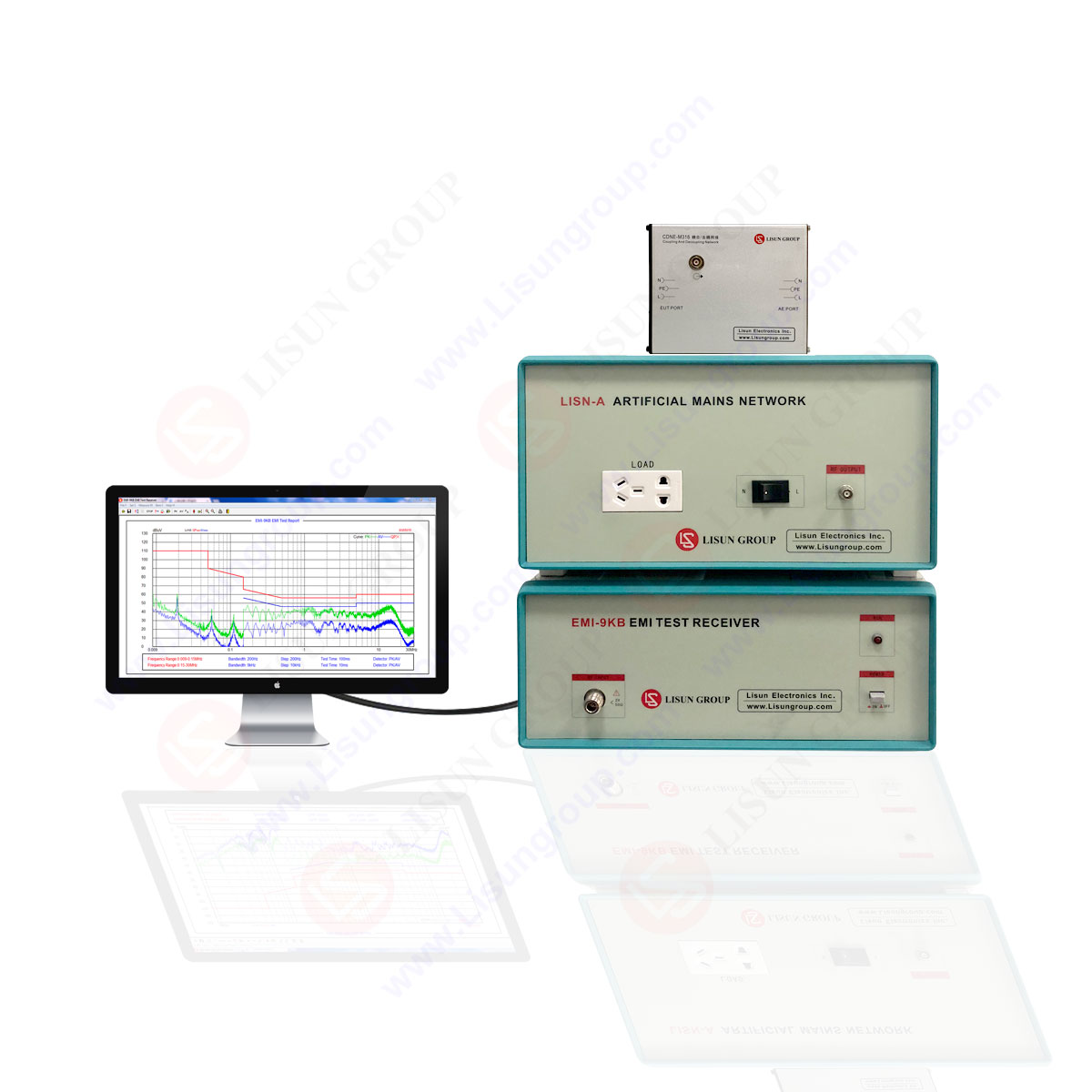With the diversification of electrical and electronic products and the continuous improvement of clock frequency, the electromagnetic environment is becoming increasingly complex, and the electromagnetic compatibility performance of its products has a great impact on people’s health and quality of life. Under the global concept of “low radiation and environmental protection”, how to reduce its radiation interference has become the focus of attention.
EMC is a discipline that studies how various electrical equipment (broadly including living organisms) can coexist without degradation under the conditions of limited space, time and spectrum resources. It includes electromagnetic interference and electromagnetic sensitivity. Electromagnetic interference test is to measure the magnitude of electromagnetic wave signals generated and emitted by the equipment under test under normal working conditions to reflect the intensity of interference to surrounding electronic equipment. Electromagnetic sensitivity test is to measure the anti-interference ability of the equipment under test to electromagnetic disturbance. Electromagnetic interference mainly includes radiation emission and conduction emission.
Radiated interference test is to check the radiated interference field strength of the equipment under test propagating through space. According to the standard requirements, the test shall be conducted in an open site or semi anechoic chamber. However, it is difficult to find an open field that meets the requirements, so it is generally tested in a shielded anechoic chamber. Antenna method and coupling decoupling network (CDN) method are two methods to measure the radiated interference of small objects such as electrical lighting equipment.
1、 Antenna method
The radiated interference test of antenna method is required to be conducted in the open field or anechoic chamber in the frequency range of 30MHz ~ 300MHz.
For the radiation emission of new products above 30mha, since the emission results are closely related to the product layout, the layout of the equipment under test, auxiliary equipment and all connecting cables needs to be carried out according to the needs during accurate testing. The test equipment mainly includes EMI receiver, receiving antenna, test software, and other auxiliary equipment (such as turntable and antenna tower). The test is conducted in the vertical and horizontal antenna polarization directions. The EUT rotates 360 degrees with the turntable, and the antenna rises and falls within the height range of 1 ~ 4m to find the maximum radiation value.
2、 CDN substitution method
Since the anechoic chamber has high requirements for site and capital investment, the CDN method can be carried out in the electromagnetic shielding room to save site costs. When the measured object meets the relevant requirements, the CDN law can be used as an alternative method for measuring the radiation interference of equipment at the frequency of 30MHz ~ 300MHz.
The CDN method test equipment is placed on a non-conductive wood block with a height of 10cm, and the wood block is placed on a grounded metal plate with a size at least 20cm larger than that of EUT. The EUT is connected to an appropriate coupling / decoupling network through a 20cm power cable. Non conductive supports shall be used so that the cable is 4cm away from the metal plate. The CDN is placed on a metal plate, and its RF output terminal is connected to the measurement receiver through a 6dB, 50 attenuator.
Antenna method and CDN method have different testing principles, testing equipment and testing sites, which inevitably lead to differences between them. Therefore, LISUN launched
EMI receiver system for EMI (Electromagnetic Interference) radiation conduction or conducted emissions testing. The EMI-9KB EMI receiver is produced by the full closure structure and strong electro-conductibility material, which has high shielding effect. Due to the new technology for the EMI Test System, it solved the instrument self-EMI problem. The test results are according to the international format test report. The EMI Test System EMI-9KB fully meets CISPR15:2018, CISPR16-1, GB17743, FCC, EN55015 and EN55022.
System Configurations:
• EMI-9KC Test System includes: EMI-9KC EMI Receiver built-in Attenuator (9K-1GHz), LISN-A Artificial Network Power (16A with RS-232 communicate), CDNE-M316 Coupling/Decoupling Network for Emission, 3pcs Isolation Transformers and cables.
• EMI-9KB Test System includes: EMI-9KB EMI Receiver (9K-300MHz), LISN-A Artificial Network Power (5A), CDNE-M316 Coupling/Decoupling Network for Emission, 3pcs Isolation Transformers, Attenuator and cables.
• EMI-9KA Test System includes: EMI-9KA EMI Receiver (9K-30MHz), LISN-A Artificial Network Power (5A), 3pcs Isolation Transformers, Attenuator and cables.
Lisun Instruments Limited was found by LISUN GROUP in 2003. LISUN quality system has been strictly certified by ISO9001:2015. As a CIE Membership, LISUN products are designed based on CIE, IEC and other international or national standards. All products passed CE certificate and authenticated by the third party lab.
Our main products are Goniophotometer, Integrating Sphere, Spectroradiometer, Surge Generator, ESD Simulator Guns, EMI Receiver, EMC Test Equipment, Electrical Safety Tester, Environmental Chamber, Temperature Chamber, Climate Chamber, Thermal Chamber, Salt Spray Test, Dust Test Chamber, Waterproof Test, RoHS Test (EDXRF), Glow Wire Test and Needle Flame Test.
Please feel free to contact us if you need any support.
Tech Dep: Service@Lisungroup.com, Cell/WhatsApp:+8615317907381
Sales Dep: Sales@Lisungroup.com, Cell/WhatsApp:+8618117273997

 中文简体
中文简体






